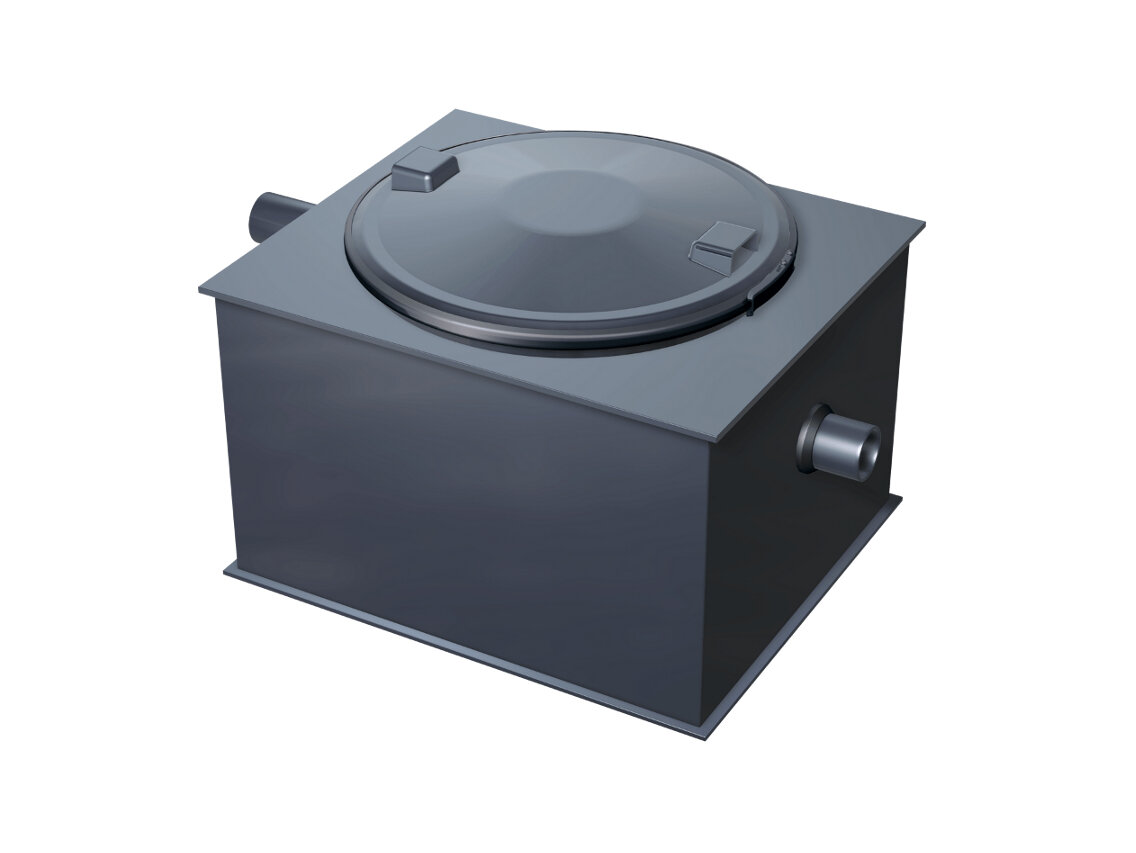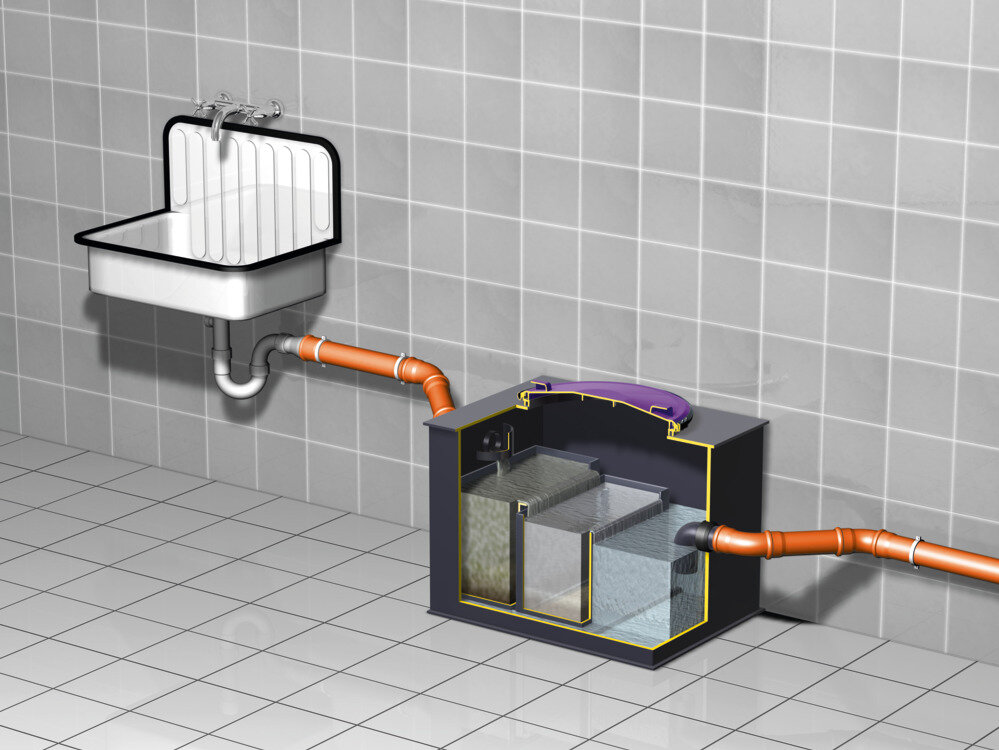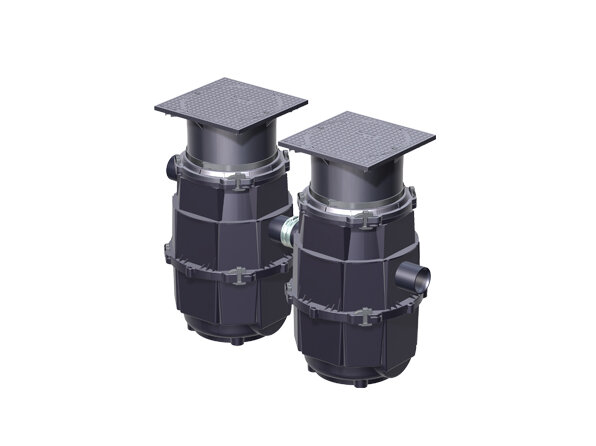The clean solution for sediments, sand and sludge. The EasySink sediment separator prevents residues, such as gypsum, scale and clay, getting into the sewers. It is used wherever a lot of sludge, sand and earth occurs and can lead to blockages in the sewer system.
We offer sediment separators with the nominal sizes NS 1 and NS 2 for exposed installation, for underground installation and as individual solutions in all desired sizes.
What happens inside a sediment separator?
The function of sediment separators is based on the principle of gravity: Due to the difference in the density of water and sediments, the materials in the separator tank separate automatically. Sediment separators with multiple chambers have a particularly high separating capacity.
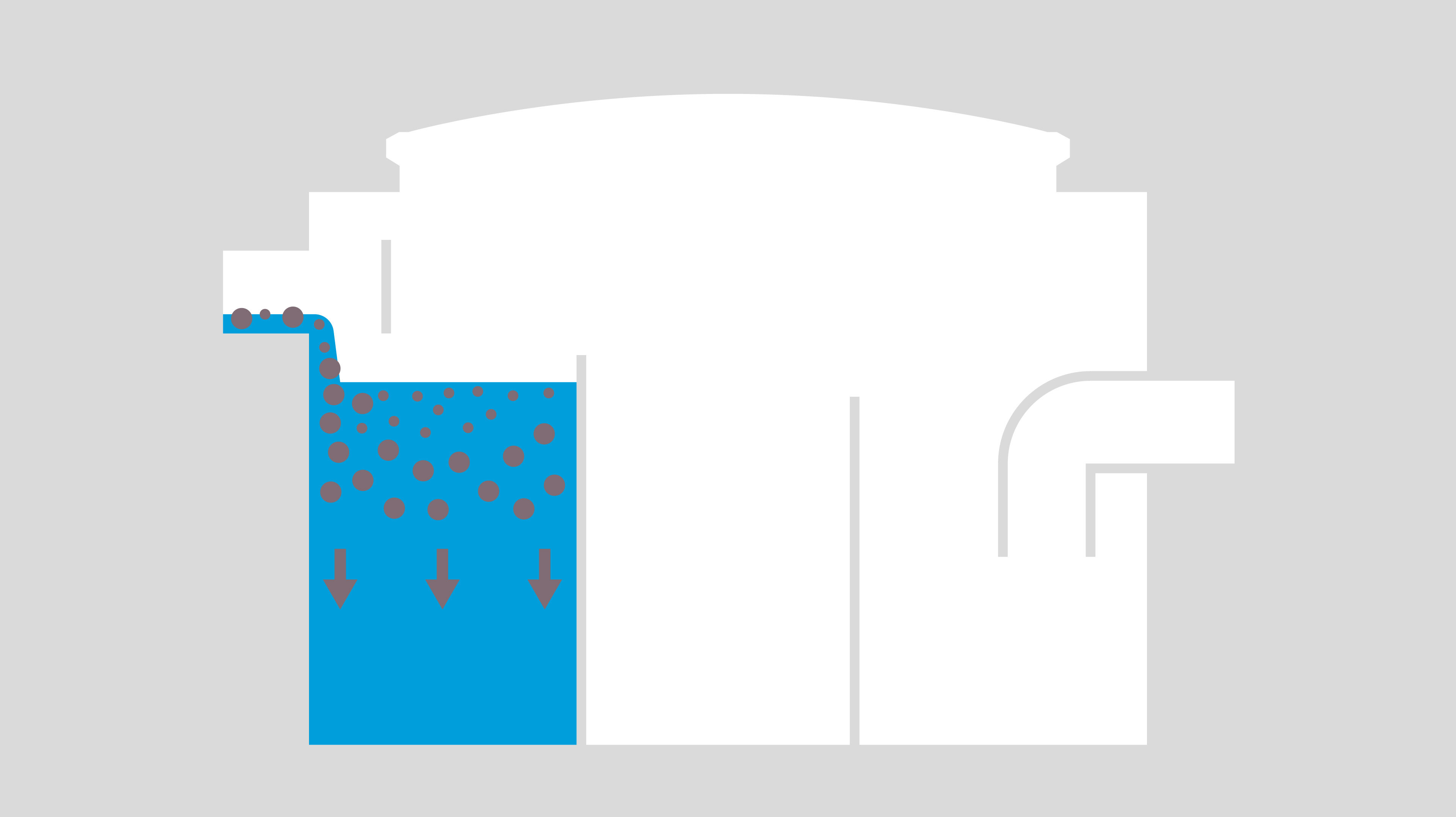
Wastewater discharge
The wastewater is routed into the sediment separator, where the flow is largely stilled.
Formation of the sludge layer
In stilled flow tanks, substances that are heavier than water sink to the bottom and settle there.
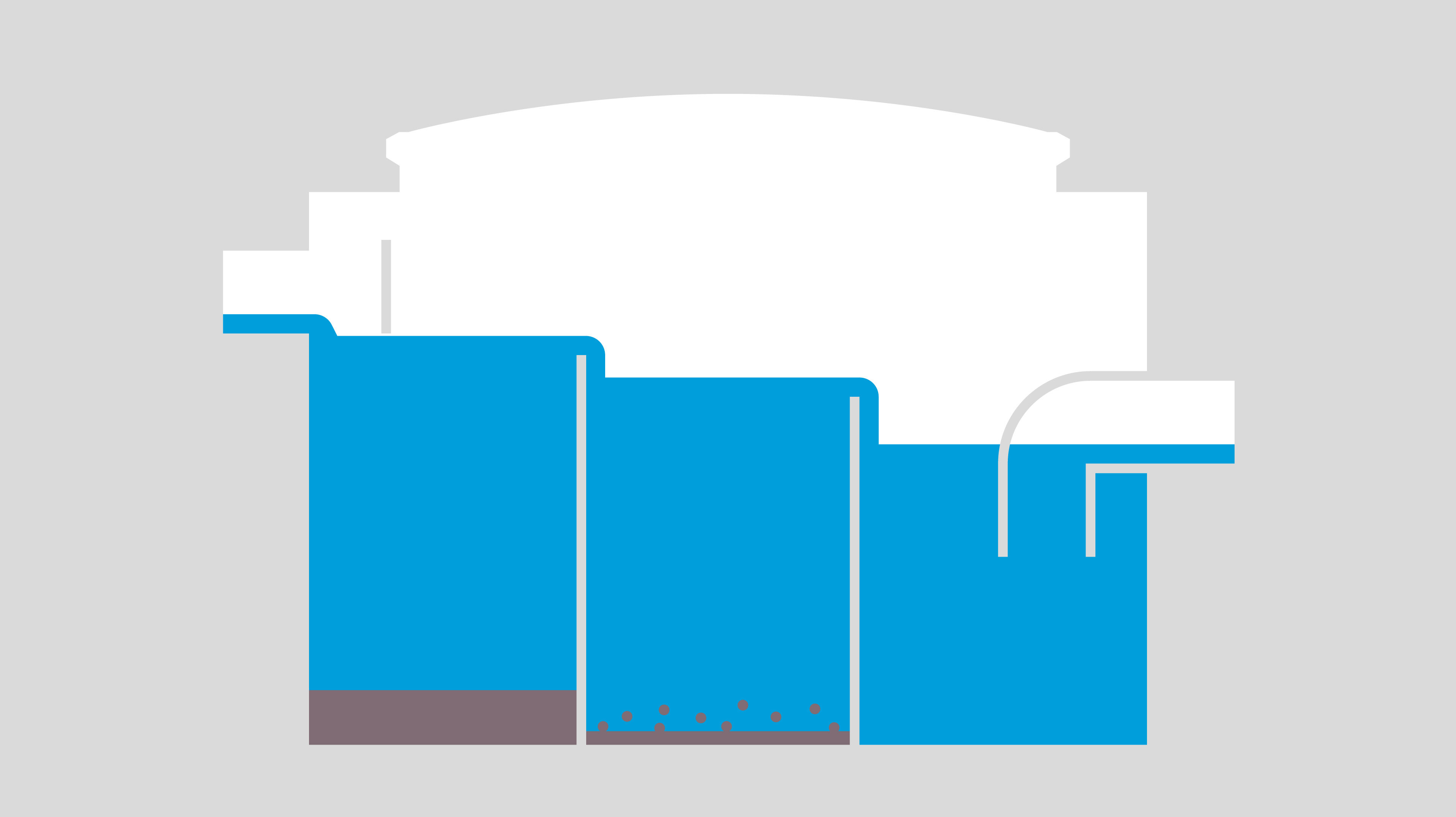
Repetition
If the separator has multiple chambers, the water flows into the next chamber where it is again separated from sediments.

